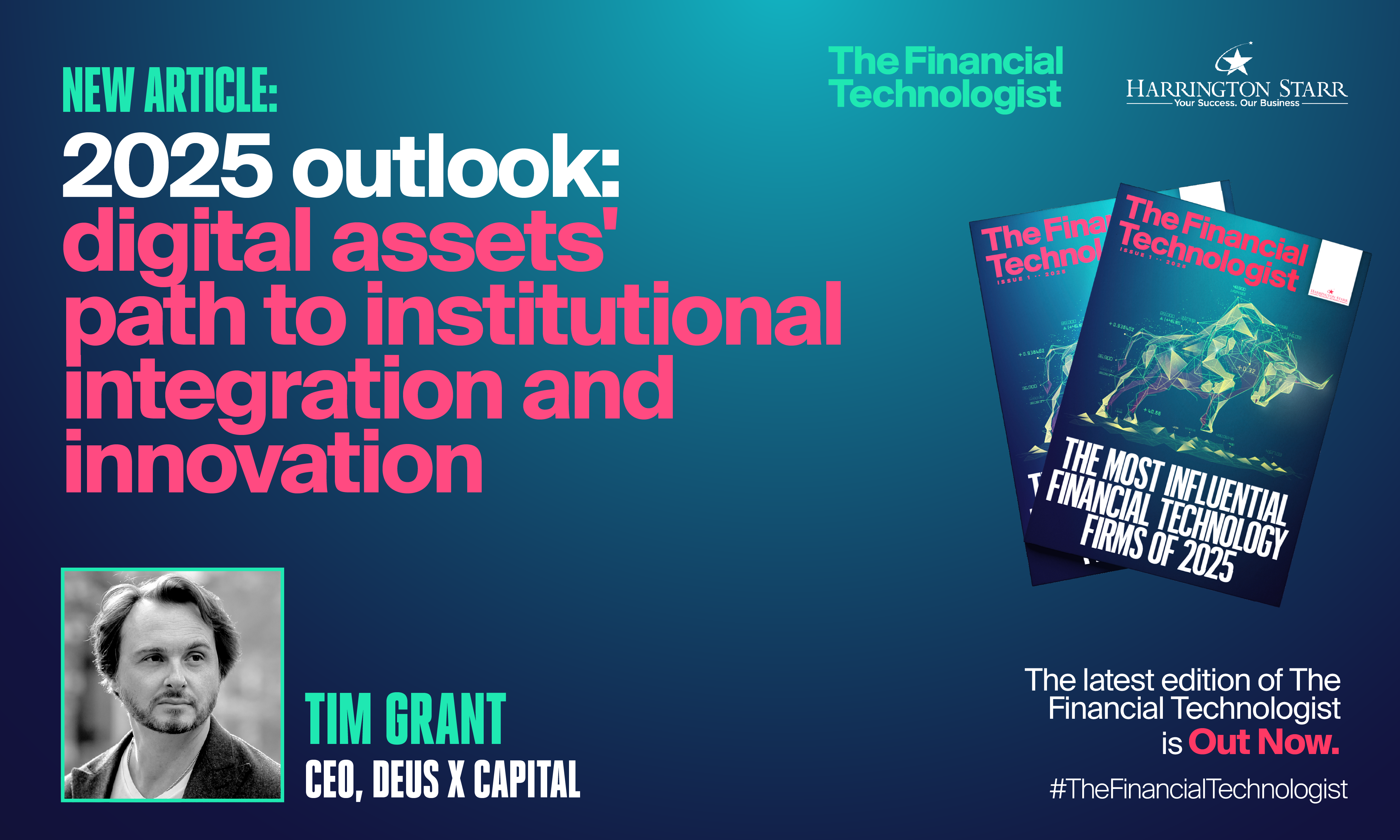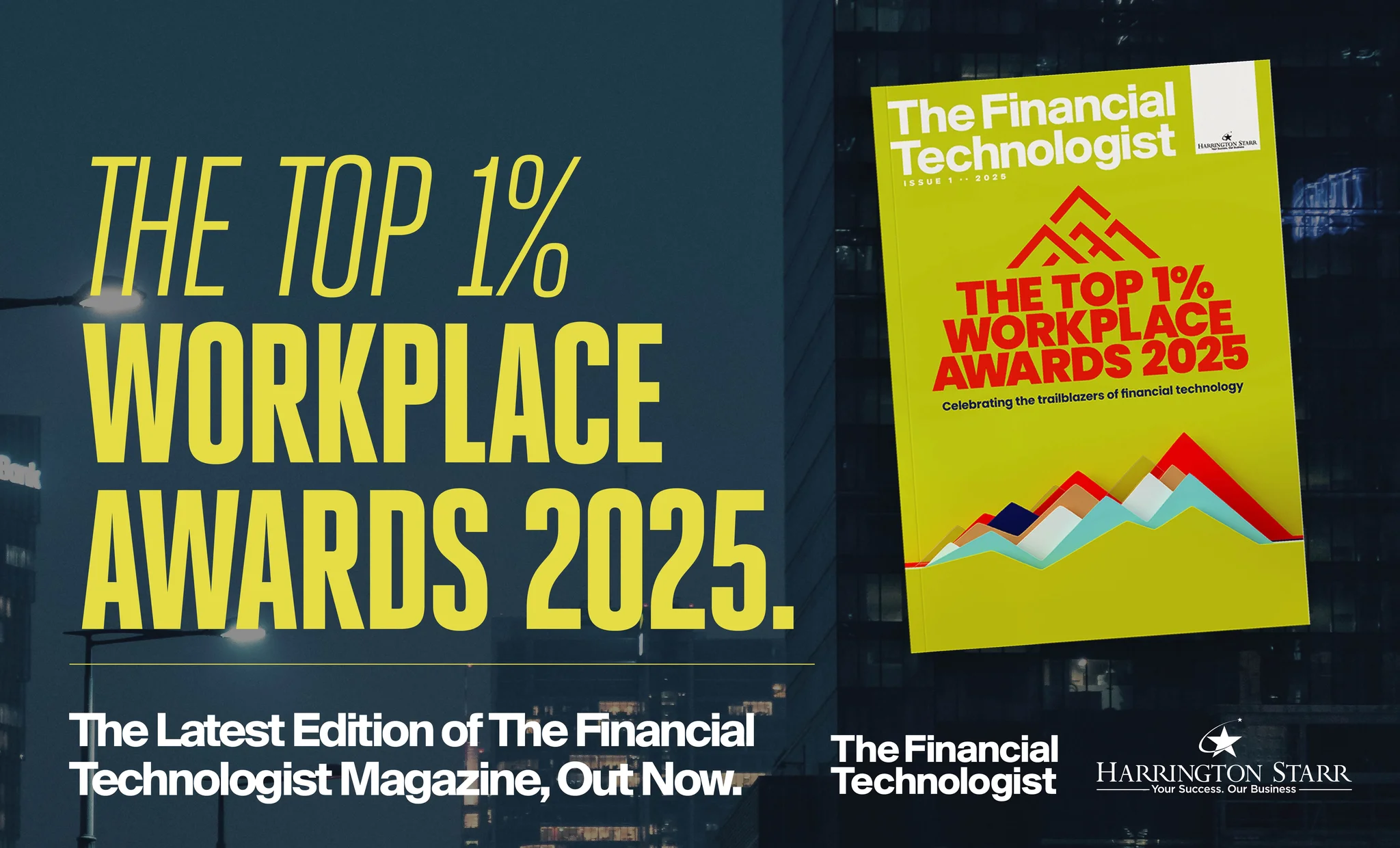Download your free copy of the latest Financial Technologist magazine here.
2025 Outlook: Digital Assets' Path to Institutional Integration and Innovation
The digital asset landscape is going through a cycle of rapid maturation. From a U.S. president releasing their own meme coin to the SEC becoming increasingly accommodating to crypto opportunities, the growing openness to digital assets is undeniable. While celebrities and meme coins are raising awareness, the real story lies beneath the surface: digital assets are maturing.
The conversation around digital assets is happening in boardrooms in almost every industry across the globe. Within the financial services industry the infrastructure is rapidly evolving, laying the groundwork for digital assets to become more integrated, but there’s much more work to be done.
Building on the institutional investment momentum
2024 marked a turning point for institutional interest in digital assets. Bitcoin and Ethereum Exchange-Traded Funds (ETFs) opened doors for banks, pension funds, and other large financial institutions eager to invest in the sector. However, attracting these players requires careful management of risk and the products and services that are taken for granted in traditional capital markets, yet haven’t matured within the digital assets space.
If ETFs represent the first in a “mainstream financial product” for digital assets, in 2025, we can expect to see evolution in lending, borrowing and repo markets to allow leverage and credit - the lifeblood of liquid markets. We need to see the derivatives markets grow in size and liquidity to allow for hedging and ultimately open up the market for structured products with embedded digital asset payoffs, a mainstay of the multi-trillion dollar wealth management franchises. We also need to see deposit-taking banking institutions become more comfortable with digital asset companies.
Due to regulatory uncertainty, it’s likely traditional bank balance sheets will be slow to engage, meaning risk capital allocators need to step up. Sovereign wealth funds, insurance companies, pension funds and credit hedge funds entering the space will provide much needed risk capital to support market growth.
The rise of asset tokenisation
One of the trends expected in 2025 is the growth of asset tokenisation — converting real-world assets into digital tokens that can be bought, sold, and managed on the blockchain. This technology allows for fractional ownership of assets like real estate, making high-value investments accessible to a wider pool of investors.
The tokenisation market is expanding rapidly, and with the new U.S. administration providing clarity on token creation and SEC regulations, there is significant appeal for traditional equity investors. In 2025, we anticipate asset tokenisation will unlock new opportunities and push the boundaries of what’s possible with digital assets.
Stablecoins: The bridge between finance and crypto
Stablecoins are emerging as an essential bridge between traditional finance and the crypto world. They provide stability, acting as both a medium of exchange and a store of value. As the use of stablecoins continues to increase, their role in the convergence of traditional finance and digital finance becomes clearer. Stablecoins will likely play a pivotal role in making digital assets more accessible and widely adopted across the global economy in the coming years.
By Tim Grant, CEO at Deus X Capital
Download your free copy of the latest Financial Technologist magazine here.







